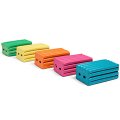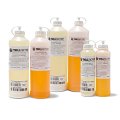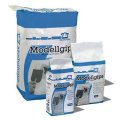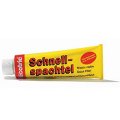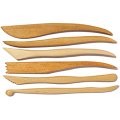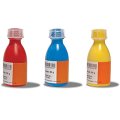Modelling Clays
Modelling pastes for models, prototypes and sculptures in various sizes
Working with dough and modelling clay has something both creative and meditative about it. To shape things with one's own hands demands and trains almost all the senses even at kindergarten age and promotes the ability to concentrate. So it's no wonder that during the meticulous elaboration of models and prototypes one gets into a flow in which space and time no longer play a role.
So that the creative process on the one hand gives pleasure, but also brings out excellent results, we offer the suitable modelling clay for all imaginable projects. From industrial design materials to smooth and finely worked materials for sculpture and animation to versatile trend products that can adhere and repair: We have pretty much everything to make designers, architects, sculptors and children happy.
The application-oriented overview from non-drying to variously hardening modelling pastes will help you to decide which material is best suited for you and your buildings.
Non-hardening yet dimensionally stable
Clay, the industrial material for professionals, as well as classic plasticine and kneading wax, are modelling compounds that do not harden completely. Clay is primarily used in the automotive industry for the construction of prototypes, but is also used in architectural modelling and the creation of prostheses. When heated, it can be easily deformed and applied to the body. In the cooled, hardened state, it can be machined and thus very precisely shaped. Our range of plasticine is just as suitable for handicrafts in kindergarten as it is for mould making and the production of animated films. In contrast, modelling wax has a high beeswax content, becomes warm and supple in the hands and is popular with adults and children alike due to its bright colours.
Oven-hardening modelling pastes
Fimo, Sculpey and Beesputty are among the modelling materials that harden in the oven. After curing, the work on the model is by no means finished. If desired, changes such as knife decorations, drillings or similar can be made afterwards. The well-known Fimo putty was initially designed for the production of doll's heads; today it is used for making bowls and jewellery or for decorating picture frames and mirrors. In professional model making, individual parts such as cars, buttons or figures can be modelled in the desired colour. Sculpey's colours make it ideal for depicting human skin. Because of the simple and very precise deformability it is not without reason the modelling clay of animation studios and sculpture builders. Beesputty was specially developed by a modeller and combines comparatively long processing times with optimal wax-like modelling properties. As it is minimally sticky, it can be easily applied to fittings. Beesputty is currently conquering the hearts of prototype modelers and miniature doll artists worldwide.
Harden in the air and have magical powers
Fimo modelling clay does not necessarily have to be cured in the oven: Fimo air is a clay-like, water-based alternative that hardens by itself after 24 hours. The so-called Keramiplast is also comparable to fine clay and can be worked with moistened hands. The material adheres to many different materials. The water contained in Keramiplast evaporates in the air and the mould hardens. This is accompanied by a certain shrinkage of the material.
Our putties are also air-hardening modelling materials. Sugru and epoxy resins are absolute all-round talents. They can be shaped and bonded as desired and are ideally suited for repairs, insulation and sealing due to their high temperature and water resistance. While epoxy resins consist of two components, should only be kneaded with gloves, cure relatively quickly and very stably, Sugru can be applied by hand, cures within a day and remains elastic. The perfect support to replace missing laptop feet or protect sensitive headphone cables from damage.
Modelling plastics and fabrics for a wide range of design options
With our thermoplastic modelling plastics Formcard and modelling granulate handles, holders, snap fasteners, wedges and spacers can be produced. The repair of fractures and the permanent connection of two materials such as rods or tubes are also possible without any problems. Before the plastics can be deformed and modelled, they are heated. With Formcard, this process can be repeated as often as required.
The thermo fabric Varaform made of cotton and thermoplastic synthetic resin originates from medicine and is used for animal preparations, fashion design, model making, restoration and stage and film set construction. In addition, masks can be made, objects can be precisely moulded and the grid shape can be covered with paper or fabric. Worbla in turn is a cellulose-polyester mixture that was initially developed for the production of shoe caps. Today it is used by make-up artists, artists and cosplayers. Whether masks, all kinds of replicas, ornaments, jewellery, helmet or boot decorations: The repeatedly heatable and water-repellent mixture makes Worbla a flexible modeling material.

